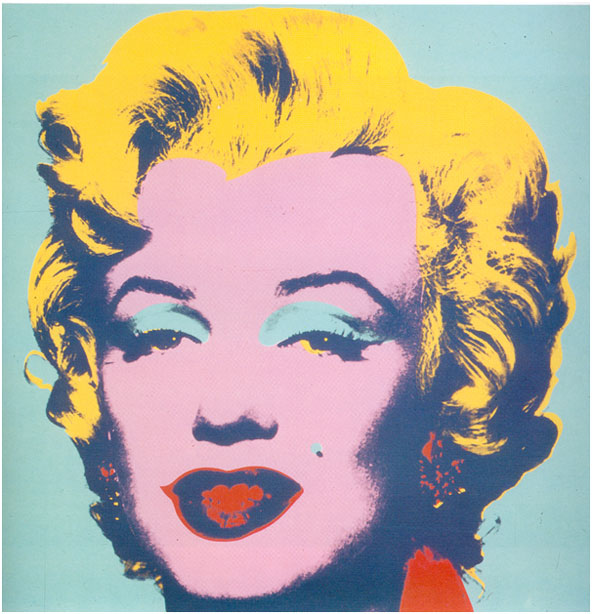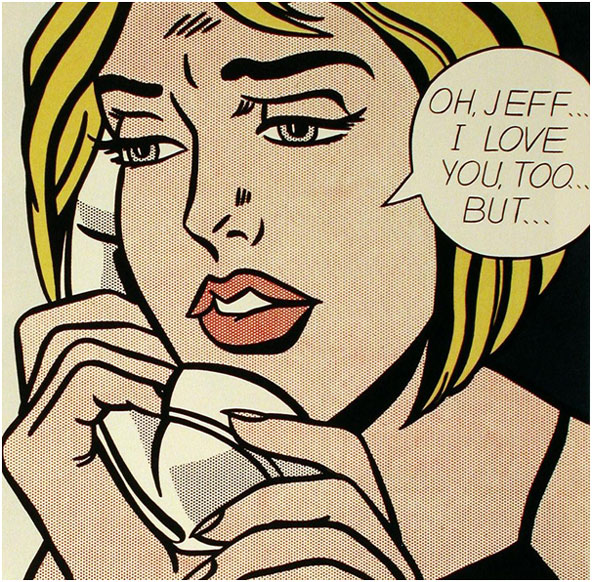In the 1950s, popular culture went through a revolution. Not only did the decade witness the rise of television and give birth to rock n roll, it was also the decade that fine art went commercial. This art movement is known as Pop Art – you’ve probably heard of names like Andy Warhol and Roy Lichtenstein and seen many of the famous works such as Warhol’s Campbell’s Soup Cans.
However, pop art was more than simply trendy art. It was a representation of the times and provided a counterculture to everything that had come before it. Celebrating the objects and familiar faces of everyday life, it stood against the mythology and grandiosity of traditional fine art. And whilst embraced commercial aspects of product advertising and Hollywood, it was just as much poking fun of these things as it was idolising them.
The central themes of the movement
Pop art aimed to blur the lines between high-brow and low-brow culture. Whilst the likes of Roy Lichtenstein made artwork in style of comic books, the likes of Richard Hamilton created collages out of advertisements and pulp magazines.
Much of pop art is based on irony and could be seen as being the first wave of post-modernism. It deliberately made use of mundane objects and used repetition. Meanwhile, whilst previous art had almost always had a moral message behind, Pop Art went against morality displaying emotional scenes with a sense of comical ambivalence (for example, Roy Lichtenstein’s ‘Drowning Girl’ in which the caption famously reads ‘I don’t care! I’d rather sink than call brad for help’). Today’s contemporary artists might not have a pop art style, but they’ll certainly have taken some inspiration from the artists behind some of the most famous pieces, and it’s interesting to see how they’ve used those ideas to create something new.
Product labelling and logos of the 1950s feature highly in Pop Art. Many works made after the 1950s have paid homage to this time by continuing to use imagery from this era.
The biggest names in pop art
Andy Warhol remains one of the biggest names to date. His most famous works are his prints of soup cans and celebrities such as Marylin Monroe. He would take these items and put them in repetitive patterns. It was a statement on mass production and how art is now viewed as a commodity. There’s a double-irony to much of Warhol’s work – the prints were in some respects mocking the way we consume art, and yet they have become so mass-produced and commercialised themselves. Warhol himself embraced this irony.
Across the pond in the UK, Richard Hamilton is one of the more revered artists of the Pop Art movement. His most famous piece ‘Just What Is It That Makes Today’s Home So Different, So Appealing?’ was a collage that critiqued domestic life featuring cuttings of household products and bodybuilder and burlesque dancer to symbolise the perfect household couple. He kickstarted the trend of using magazine advertisements in Pop Art.
Roy Lichtenstein is famous for his comic-based art pieces. He deliberately blurred the lines between high and low art questioning whether art had to have a moral message at all. One of his most famous works is ‘Whaam!’ which is a cartoon of a jet shooting down another plane. It put the context of war into a comical setting that questioned how trivial war imagery had become.
David Hockney emerged in the 1960s and is another big name from the movement. His works experimented with suburban scenes, often changing his artistic style within each painting creating a jarring blur or realism and surrealism. Hockney’s ‘Splash’ is the best example of this aesthetic – the splash is painted in loose and natural detail, whilst the house and pool in the background are contrastingly geometric and plain.
Other famous artists from the movement include Robert Rauschenberg, Eduardo Paolozzi and James Rosenquist.
The best places to see Pop Art
Most contemporary art galleries around the world contain works of Pop Art. However, there are some galleries in which the greatest of these works can be found.
The Tate Modern in London contains several famous works of Pop Art, including Roy Lichtenstein’s ‘Whaam!’. In 2013, an entire exhibition was held in celebration of the artist’s works, information of which you can read here http://www.tate.org.uk.
New York’s The Museum of Modern Art also contains some key pieces such as Jasper Johns’ ‘Flag’ and of course Andy Warhol’s ‘Campbell’s Soup Cans’. You can read here for more information of Pop Art pieces found at this museum: https://www.timeout.com.
The Andy Warhol Museum in Pittsburgh meanwhile is the largest gallery dedicated to a single artist, containing 900 of his paintings, 100 sculptures and over 4000 photographs, as detailed here: https://hamiltonselway.com/. The museum also delves into the artist’s personal life, giving an insight into the artist’s influences and his own personal interpretations of his work.
The influence of Pop Art
Pop art has had a huge influence in all areas of modern life from entertainment (have you ever wondered how much do ice sculptures cost?) and fashion. It symbolised the beginning of celebrity worship, whilst also critiquing it. Its use of irony also directly led to postmodernism – deconstructing everything that had come before it.
There are many modern artist’s today still pushing pop art forward such as Kevin Cherry, whose work uses elements of 60s pop art whilst incorporating digital art from the internet age. Mario Wagner similarly uses 50s iconography and combines it with elements of digital culture.



